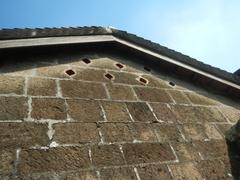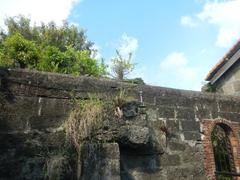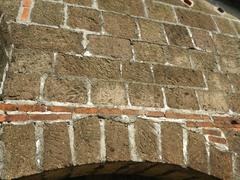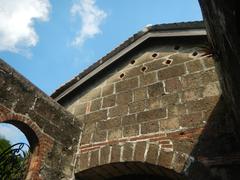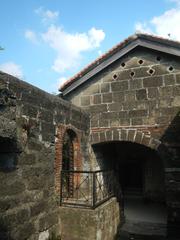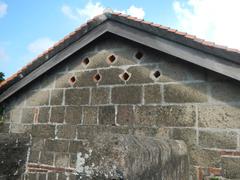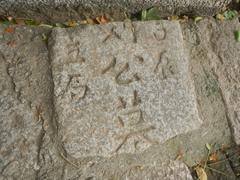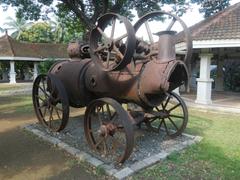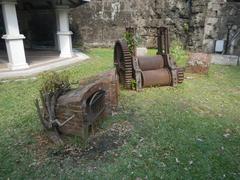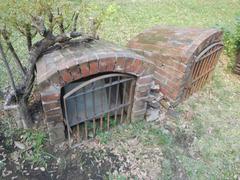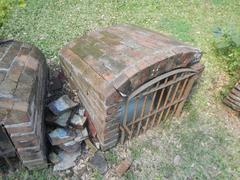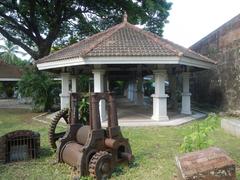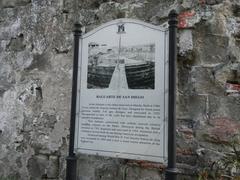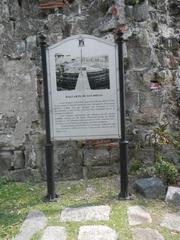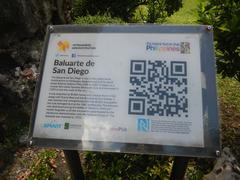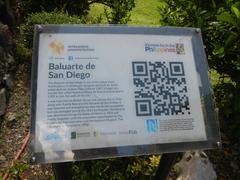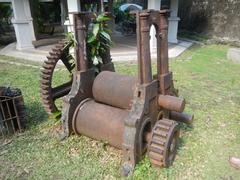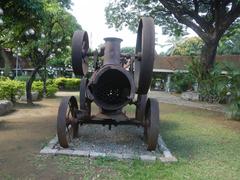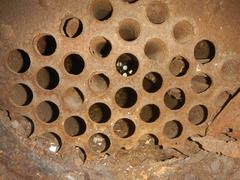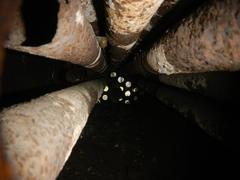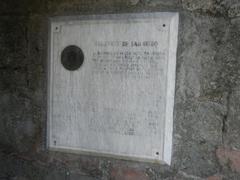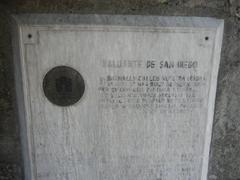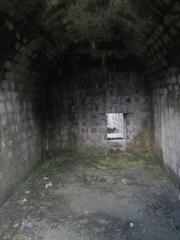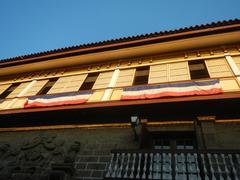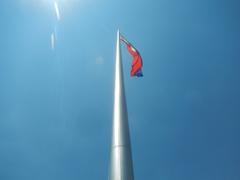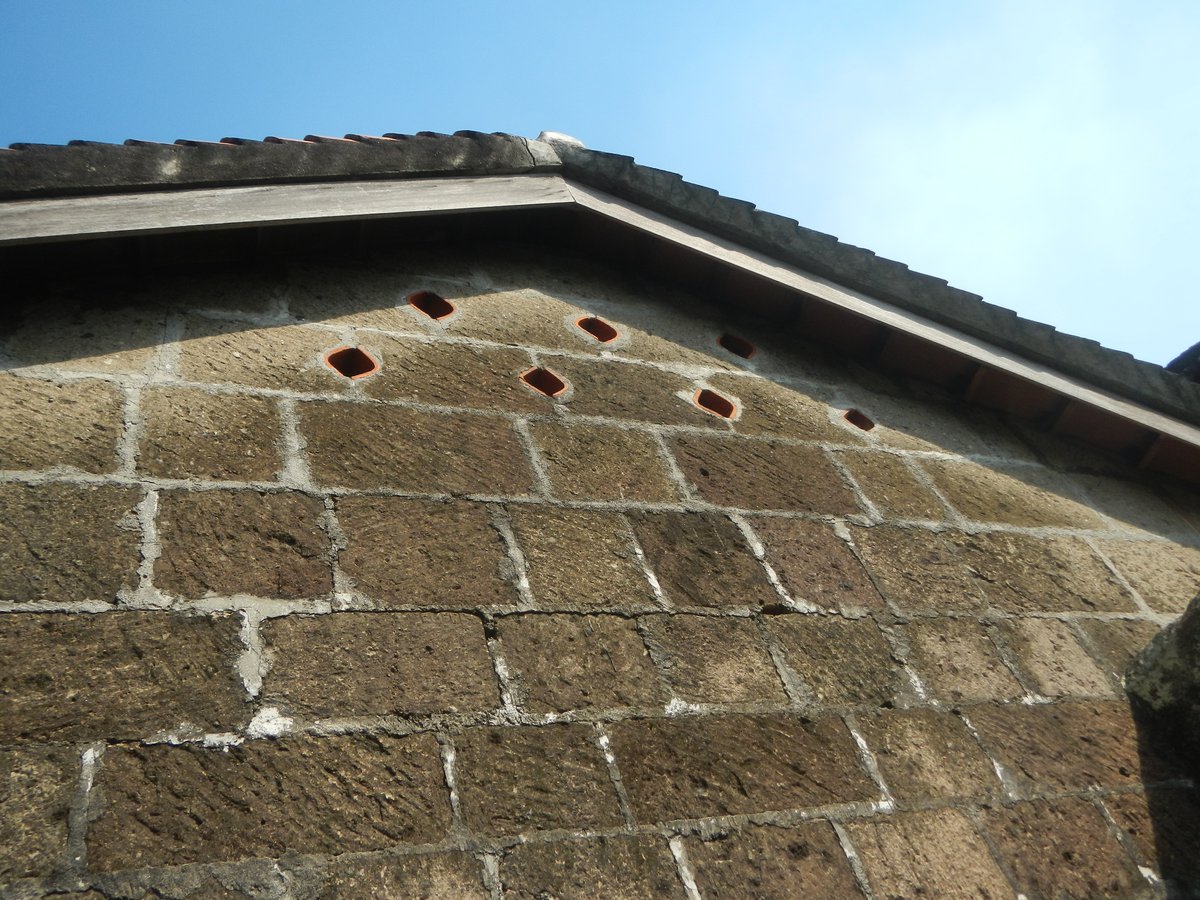
Visiting Torre de Nuestra Señora de Guia in Taguig: Hours, Tickets, and Tips
Date: 25/07/2024
Why Visit Torre de Nuestra Señora de Guia?
The Torre de Nuestra Señora de Guia, also known as the Tower of Our Lady of Guidance, stands as a beacon of historical and cultural significance in Manila, Philippines. This iconic monument, deeply rooted in the rich tapestry of the country’s colonial past, offers visitors a unique glimpse into the Spanish era of Philippine history. Constructed between 1584 and 1590 by order of Governor General Santiago de Vera, the tower initially served as a strategic watchtower overlooking Manila Bay, designed to monitor incoming ships and potential threats (Intramuros). Jesuit priest Antonio Sedeño oversaw its construction, which presented numerous engineering challenges due to its sandy foundation. Despite these difficulties, the tower was successfully completed and later integrated into the formidable Baluarte de San Diego, a crucial defensive structure of its time.
The monument is intrinsically linked to the revered image of Nuestra Señora de Guia, the oldest Marian icon venerated in the Philippines. This image, discovered in 1571, has been a symbol of guidance and protection for sailors and travelers, earning the title ‘Our Lady of Guidance’ (NSDGA). Over the centuries, the Torre de Nuestra Señora de Guia has witnessed numerous historical events, including the British invasion of Manila in 1762 and the Battle of Manila in 1945. Today, it remains a testament to the enduring faith and resilience of the Filipino people, attracting historians, pilgrims, and tourists alike to explore its storied past.
Table of Contents
- Introduction
- History of Torre de Nuestra Señora de Guia
- Visitor Information
- FAQ
- Legacy and Preservation
- Call to Action
- Conclusion
Introduction
The Torre de Nuestra Señora de Guia, also known as the Tower of Our Lady of Guidance, is a historic monument in Manila, Philippines. This article delves into its rich history, provides practical visitor information, and offers travel tips to enhance your visit to this iconic site.
History of Torre de Nuestra Señora de Guia
Origins and Construction
The construction of the Torre de Nuestra Señora de Guia was commissioned by Governor General Santiago de Vera between 1584 and 1590. The primary purpose of the tower was to serve as a watchtower overlooking Manila Bay, providing a strategic vantage point for monitoring incoming ships and potential threats (Intramuros). Jesuit priest Antonio Sedeño was assigned to oversee the project, which posed structural challenges due to its sandy foundation. Despite these difficulties, the tower was successfully completed and integrated with the Baluarte de San Diego.
Integration with Baluarte de San Diego
In 1590, Manila’s wooden fortifications were rebuilt in stone, and by 1593, the upper portion of the Torre de Nuestra Señora de Guia was demolished. The base of the tower was then integrated with a new spade-shaped bulwark known as the Baluarte de San Diego (Intramuros). This integration marked a significant transformation in the fortification strategy of Manila, making the Baluarte de San Diego a formidable symbol of Spanish power in the region.
The Icon of Nuestra Señora de Guia
The Torre de Nuestra Señora de Guia is intrinsically linked to the image of Nuestra Señora de Guia, or Our Lady of Guidance. This image is the oldest among all those venerated in the Philippines. On May 19, 1571, one of Miguel Lopez de Legaspi’s soldiers discovered a beautiful statue of the Virgin Mary at the seashore, now the site of the Ermita Church (NSDGA). This veneration led to the title ‘Guia’ or ‘guide,’ emphasizing her role in guiding and protecting sailors and travelers.
Royal Decree and Patronage
In 1578, King Philip II of Spain issued a royal decree declaring Nuestra Señora de Guia as the ‘Sworn Patroness’ of Manila. This decree was a recognition of the continual favors and miracles attributed to her, particularly in aiding navigators and sailors. The Ermita Church, where the statue was enshrined, became one of the foremost Marian shrines in the Philippines (Wikipedia).
Cultural and Religious Significance
The image of Nuestra Señora de Guia holds immense cultural and religious significance in the Philippines. It is believed that the statue was brought to the Philippines in 1521 by Magellan’s ships. The devotion to Our Lady of Guidance has been a cornerstone of Filipino spirituality, especially among sailors and navigators who sought her protection before embarking on voyages (NSDGA).
Visitor Information
Visiting Hours and Ticket Prices
The Torre de Nuestra Señora de Guia is accessible through the Baluarte de San Diego, which is open to visitors every day from 8:00 AM to 6:00 PM. Admission fees are as follows:
- Adults: PHP 75
- Students and Seniors: PHP 50
- Children under 7: Free
Travel Tips
- Best Time to Visit: The best time to visit is during the cooler months from December to February to avoid the intense heat.
- What to Wear: Comfortable clothing and shoes are recommended as you will be walking on uneven surfaces.
- Photography: Don’t forget your camera! There are plenty of picturesque spots to capture.
Nearby Attractions
While visiting the Torre de Nuestra Señora de Guia, consider exploring other nearby attractions:
- Intramuros: The historic walled city of Manila.
- San Agustin Church: A UNESCO World Heritage Site.
- Fort Santiago: Another significant historical landmark.
Guided Tours and Events
Guided tours are available and highly recommended to get an in-depth understanding of the site’s history. Special events are occasionally held at the Baluarte de San Diego, so check the official website for any upcoming activities.
FAQ
Q: What are the visiting hours for Torre de Nuestra Señora de Guia? A: The site is open daily from 8:00 AM to 6:00 PM.
Q: Are guided tours available? A: Yes, guided tours are available and can be booked through the official website.
Q: How much are the tickets? A: Tickets are PHP 75 for adults, PHP 50 for students and seniors, and free for children under 7.
Legacy and Preservation
The legacy of the Torre de Nuestra Señora de Guia and the image of Our Lady of Guidance continues to be preserved and celebrated in the Philippines. The Baluarte de San Diego, which incorporates the base of the original tower, stands as a National Cultural Treasure of the Philippines. It serves as a historical landmark that reflects the rich colonial history and the enduring faith of the Filipino people (Intramuros).
The Ermita Church, despite suffering damage over the centuries, remains a significant site of pilgrimage and devotion. The image of Nuestra Señora de Guia continues to be a symbol of guidance, protection, and faith for many Filipinos, particularly those who navigate the seas (NSDGA).
Call to Action
Planning a visit to the Torre de Nuestra Señora de Guia? Download our mobile app Audiala for more travel tips and updates. Don’t forget to check out our other related posts and follow us on social media for the latest news on Manila’s historical sites!
Conclusion
In conclusion, the Torre de Nuestra Señora de Guia is more than just a historical monument; it is a symbol of resilience, faith, and cultural heritage. From its early days as a strategic watchtower to its integration into the Baluarte de San Diego and its association with the revered image of Our Lady of Guidance, the tower encapsulates significant aspects of the Philippines’ colonial history. Visitors to this site are offered not only a chance to delve into the rich history of Manila but also an opportunity to experience the cultural and religious significance that has shaped the identity of the Filipino people (Wikipedia).
Today, the Torre de Nuestra Señora de Guia stands as a National Cultural Treasure, reflecting the architectural prowess and strategic ingenuity of the Spanish colonial period. It continues to draw pilgrims, historians, and tourists, each seeking to connect with the past and gain insights into the enduring legacy of Our Lady of Guidance. Whether you are a history enthusiast, a devout pilgrim, or a curious traveler, a visit to the Torre de Nuestra Señora de Guia promises a rich and enriching experience that highlights the profound historical and cultural heritage of the Philippines (Intramuros).
References
- Intramuros. (2020). Virtual Tour Baluarte de San Diego. https://intramuros.gov.ph/2020/06/13/virtual-tour-baluarte-de-san-diego/
- NSDGA. Nuestra Señora de Guia. https://nsdga.com/nuestra-se%C3%B1ora-de-guia
- Wikipedia. Our Lady of Guidance. https://en.wikipedia.org/wiki/Our_Lady_of_Guidance
